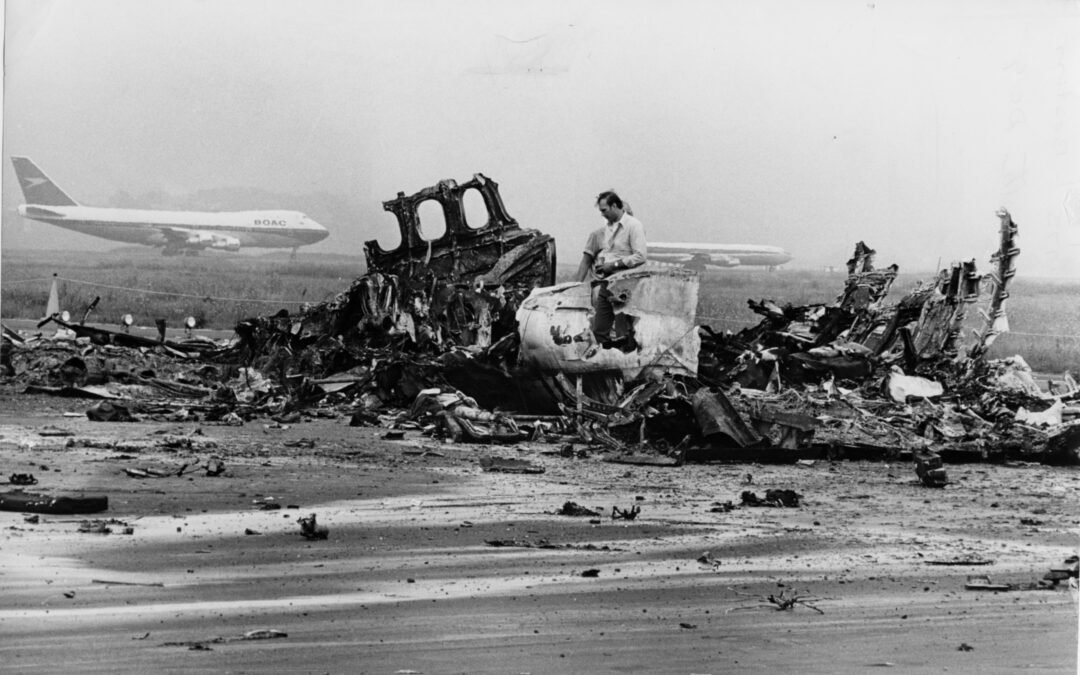From NH Aviation Museum: On July 31, 1973, a flight carrying 83 passengers and six crew members departed Manchester for Boston’s Logan airport, where it crashed into a seawall while attempting to land in dense fog.
Of those on board, all but two died instantly. One survivor perished within the hour among the wreckage. Another, 20-year-old Air Force Sgt. Leopold Chouinard, would live for several months, his story of survival receiving national news coverage.
The crash of Delta Flight 723 remains the deadliest air disaster in New England history. Paul Houle, author of ‘The Crash of Delta Flight 723,’ will examine the accident during a program and book-signing on Thursday, July 27 at 7 p.m. at the Aviation Museum of N.H., 27 Navigator Road, Londonderry.
Houle, a former U.S. Army traffic accident investigator, will speak about the many errors that compounded to cause this tragic accident, from the mechanical to the bureaucratic. Houle will also sign copies of his 2021 book.
In 1973, Delta was a relatively new airline in New England skies, having taken over long-time regional carrier Northeast Airlines only the year before. On July 31, 1973, Delta Flight 723 was scheduled to fly from Burlington, Vt. to Boston Logan, one of Northeast’s old routes using a former Northeast DC-9 passenger jet.
However, instead of landing in Boston, the flight was given extra duties. While en route to Boston, it was ordered to set down in Manchester, N.H. to pick up 45 passengers whose flight to New York City had been cancelled due to weather. Delta was planning to get them to New York via connecting flights in Boston.
In Manchester, 13 of the New York-bound passengers opted not to take Delta’s alternate routing — a decision that saved their lives. And in one case, a Boston-bound passenger who was a resident of Amherst, N.H. decided to get off the plane in Manchester — another case of a life being saved.
After departing what was then known as Grenier Field in Manchester, the flight made the quick hop to Logan, about 50 miles to the south. Landing from the south, the aircraft came in too low on its approach. It undershot runway 4R and, travelling at 150 mph, struck the nine-foot concrete sea wall head-on, destroying the aircraft and creating a huge fuel fire at the scene.
However, the ground fog was so thick, at first no one at the airport or in the control tower knew the crash had occurred, and the runway remained active for seven minutes. If another aircraft had tried to land during that time, the disaster would have been even more catastrophic.
Houle’s book details the aftermath of the crash through the investigation and legal battles that followed, also focusing on how, embroiled by the Watergate scandal, the actions of the Nixon administration interfered with the National Transportation Safety Board’s ability to investigate the accident.
Survivor Chouinard, after being burned over 80 percent of his body, battled his injuries for an incredible 133 days. His miraculous survival was the subject of continuing national news coverage until he finally succumbed to his injuries that October.
On Sunday, July 30, a memorial service will be held at 9 a.m. at Logan Airport’s ‘Our Lady of the Airways’ to commemorate the anniversary of the tragic crash.
Join author Paul Houle at the Aviation Museum of N.H. on Thursday, July 27, at 7 p.m. for the presentation and book signing. The museum is located at 27 Navigator Road, Londonderry, N.H. The program is $10 per person; free to Aviation Museum members. Books retail at $35. Tickets available at the door or can be reserved in advance by calling (603) 669-4877.
All proceeds support the non-profit museum’s youth aviation education outreach, including its ‘Flights of Discovery’ summer camp and its high school student plane-building program.
For more information, visit www.aviationmuseumofnh.org or call (603) 669-4820. Follow the Aviation Museum on social media at www.facebook.com/nhahs.


 Return to the Concord Monitor
Return to the Concord Monitor